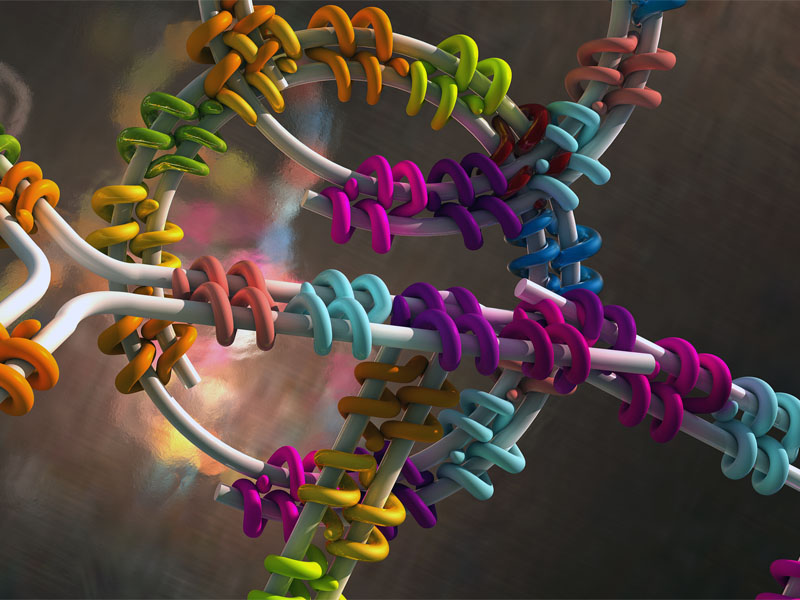Desoxyribonucleic acid, better known by its abbreviation DNA, carries our genetic information. But to Prof. Hendrik Dietz and Florian Praetorius from TUM, DNA is also an excellent building material for nanostructures. Folding DNA to create
But there are limits to this approach, explains Dietz. The «construction work» always takes place outside of biological systems and many components must be chemically synthesized. «Creating
PROTEINS ACT AS STAPLES
Designed «staple proteins» based on TAL effectors are the key to the method. TAL effectors are produced in nature by certain bacteria that infect plants and are able to bind to specific sequences in the plant DNA, thereby neutralizing the plant’s defense mechanisms. «We’ve constructed variants of the TAL proteins which simultaneously recognize two custom target sequences at different sites in the DNA and then basically staple them together," says Dietz. «This was exactly the property we needed: proteins that can staple DNA together.»
The second component of the system is a DNA double strand containing multiple binding sequences that can be recognized and linked by a set of different staple proteins. «In the simplest case a loop can be created by binding two points to one another," Praetorius explains. «When several of these binding sites exist in the DNA, it’s possible to build more complex shapes." An essential aspect of the researcher’s work was therefore determining a set of rules for arranging the staple proteins themselves and how to distribute the binding sequences on the DNA double strand in order to create the desired form.
NEW TOOLS FOR FUNDAMENTAL RESEARCH
 What’s more, the staple proteins serve as anchor points for additional proteins: A method referred to as genetic fusion can be used to attach any functional protein domain desired. The hybrid structures made of DNA and proteins then function as a
What’s more, the staple proteins serve as anchor points for additional proteins: A method referred to as genetic fusion can be used to attach any functional protein domain desired. The hybrid structures made of DNA and proteins then function as a
The new method paves the way for controlling the spatial arrangement of molecules in living systems, which allows probing fundamental processes. For example, it’s assumed that the spatial arrangement of the genome has a substantial influence on which genes can be read and how efficient the reading process is. The intentional creation of loops using
Source: https://www.tum.de/en/about-tum/news/press-releases/detail/article/33812/


